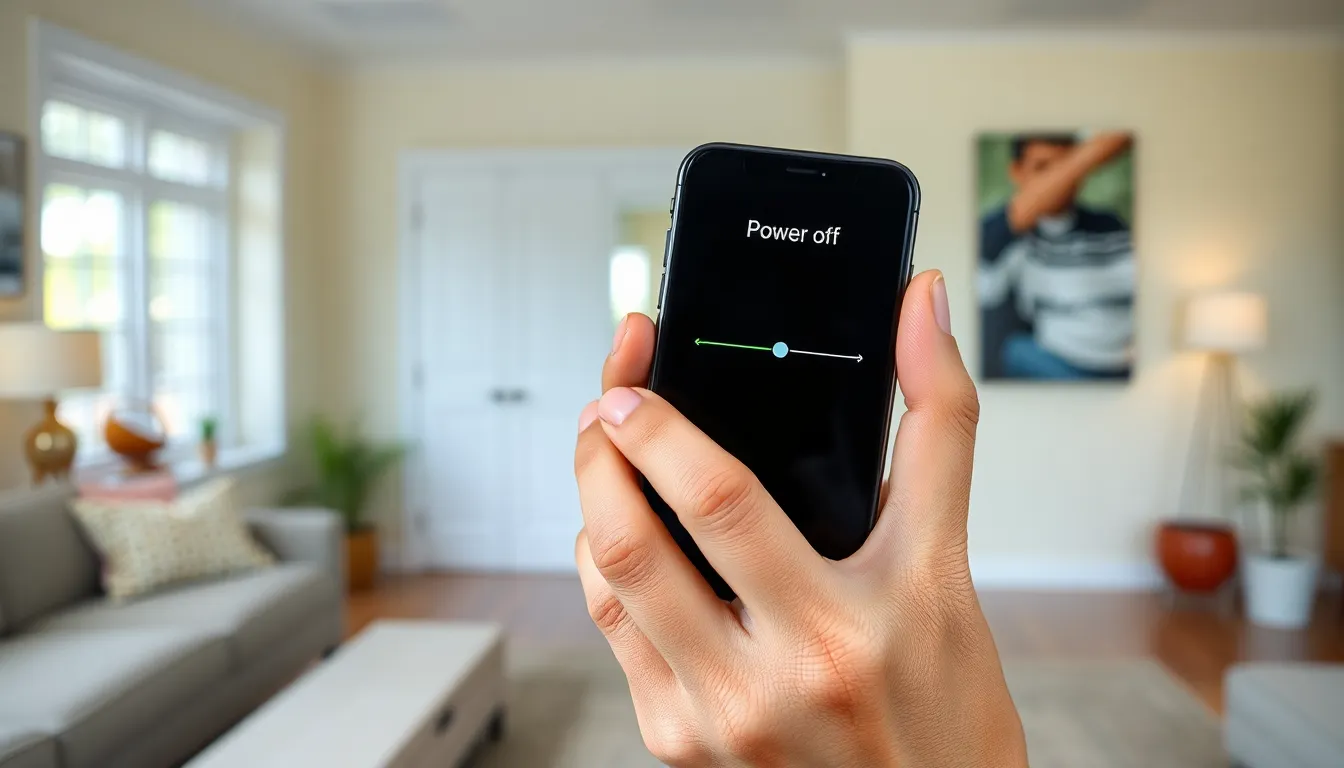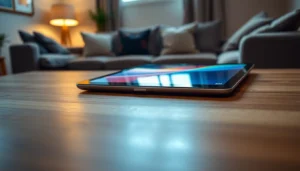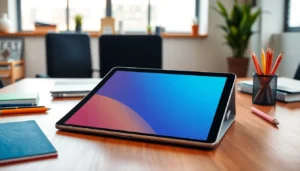Table of Contents
ToggleIn a world where smartphones have become an extension of ourselves, knowing how to manually power off an iPhone might seem like a lost art. But fear not, tech-savvy adventurers! Whether your device is acting like a drama queen or you just need a break from those endless notifications, mastering the power-off process is essential.
Understanding Your iPhone’s Power Options
Knowing your iPhone’s power options enhances its usability. Manually powering off the device ensures optimal performance and allows users to take control of their smartphones.
Importance of Powering Off
Powering off an iPhone can resolve software glitches. Device performance often improves after a shutdown, freeing memory. This process can also extend battery life by eliminating background activities. Users find that shutting it down offers a reset, which aids in troubleshooting issues while increasing security. Regularly powering off the device promotes system health, ensuring smoother operations over time.
When to Power Off Your iPhone
A user should consider powering off an iPhone when troubleshooting becomes necessary. It’s useful to shut down during software updates, providing a clean slate. Turning it off may also aid in managing battery life during prolonged inactivity. Users often find shutting down beneficial during flights, where device usage is restricted. Additionally, powering off offers a break from notifications during personal time.
Steps to Manually Power Off iPhone

Knowing how to manually power off the iPhone is essential for managing various issues and maximizing device performance. Follow these steps for different models.
Using the Side Button and Volume Button
Press and hold the Side button along with either the Volume Up or Volume Down button until the power-off slider appears. This method works for iPhones with Face ID and X models. Slide the power-off option from left to right to initiate the shutdown process. The screen will display a countdown, and the device will power off within a few seconds. Releasing both buttons before sliding may result in a screenshot instead of powering off.
Alternative Method for Older Models
For older iPhones without Face ID, press and hold only the Side button until the power-off slider appears on the display. This action immediately activates the shutdown feature. When users slide the power-off option, the phone will turn off in seconds. For those using an iPhone 6 or earlier, the Home button and Sleep/Wake button can also be held together, producing the same effect. Always ensure essential apps are closed to avoid data loss when shutting down.
Troubleshooting Common Issues
Sometimes iPhones experience issues requiring additional troubleshooting steps when trying to power them off. Addressing common problems can improve device performance and user experience.
Unresponsive iPhone
An unresponsive iPhone can frustrate users. If the device fails to respond to touch or button inputs, pressing and holding the Side button along with the Volume Up or Down button for about 10 seconds usually forces a restart. An alternative method involves trying to hold the Side button alone until the Apple logo appears. In cases where the iPhone remains unresponsive, connecting the device to a charger might help restore responsiveness. Performing a force restart can clear minor issues and restore normal function.
Software Glitches
Software glitches can hinder device performance. When the iPhone exhibits unexpected behavior, manually powering off the device can resolve these issues. Restarting helps refresh the operating system, which might improve responsiveness. If problems persist after a restart, checking for software updates is crucial. Users should navigate to Settings, then select General, followed by Software Update. Ensuring the iPhone runs the latest software version prevents bugs and enhances security. Regular updates keep the device operating smoothly and minimize glitches.
Best Practices for Powering Off
Properly powering off an iPhone not only enhances performance but also prolongs the device’s life. Following best practices can ensure optimal device management.
Regular Maintenance
Regularly turning off an iPhone can help maintain its functionality. This simple habit allows the system to refresh and clear memory usage. It’s advisable to power down every few days, especially if the device shows signs of sluggish operation. Scheduling regular shutdowns during software updates can also prevent issues. Additionally, closing essential apps before powering off helps secure data.
Battery Preservation Tips
Battery preservation plays a crucial role in iPhone management. Adopting a routine of powering off when not in use can conserve battery life significantly. Users should aim to power down the device during prolonged periods of inactivity, such as overnight. Monitoring battery health settings offers insights into optimizing performance. Keeping the software updated also includes fixes for battery management, making it essential for maintaining device efficiency.
Mastering the manual power-off process for an iPhone is essential for maintaining optimal device performance. It not only helps in resolving issues but also promotes a healthier digital lifestyle by allowing users to disconnect when needed. Regularly powering off the device can enhance its longevity and efficiency while preserving battery life.
By following the outlined steps and best practices, users can ensure their iPhones operate smoothly and securely. Embracing this simple yet effective technique can lead to a more enjoyable and hassle-free smartphone experience.







